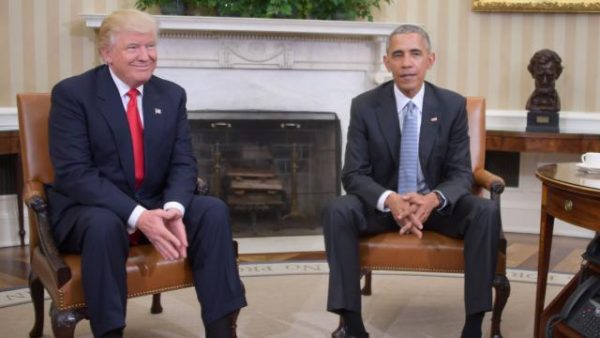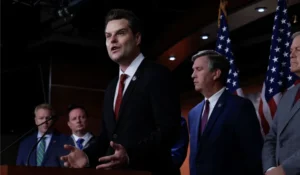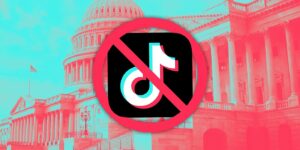President-elect Trump’s Astonishing Path to Victory

Media pundits can agree upon the fact that the 2016 election will most definitely be considered one of the most memorable political races in world history. The Democratic and Republican nominees battled in a tough race within their parties, and with each other throughout late 2015 and almost the entirety of 2016. Two campaigns with messages that were polar opposites of one another competed against each other. Hillary Clinton aimed to continue Obamacare, enact stricter gun laws, create a path for immigrants to become legal citizens, and create more jobs with the implementation of “greener” energy alternatives. Donald Trump aimed to replace Obamacare, protect the rights of gun owners, create strict immigration laws, and create more jobs by bringing offshore jobs back to the United States. So different, however, ultimately, only one candidate’s ideas would take precedence after the election of November 2016: and America chose Donald Trump.
Sources such as FiveThirtyEight (a website run by Nate Silver) and RealClearPolitics (a website created by John McIntyre and Tom Bevan) convinced many Americans that Hillary Clinton would be elected the 45th President of the United States. Both sites compile polls conducted by major news networks to predict who would most likely win the majority of the vote on a statewide, as well as national, level. RealClearPolitics uses point spreads (based upon percentages) to represent each candidate’s chances of winning while FiveThirtyEight uses percentages. On November 8th, RealClearPolitics predicted that Hillary Clinton was ahead by 3.2 points nationally and FiveThirtyEight predicted that Hillary Clinton had a 71.4% chance of winning the presidency. Nearly all news networks showed Hillary Clinton leading Donald Trump nationally in almost every poll they conducted. One of the only sources that predicted Trump was leading nationally in almost every poll was the LA Times. Upon reflection, many have wondered why it is nearly every poll before the election showed Hillary Clinton winning. The answer is, like the nature of this election, complex.
There was a “silent majority” in this election. Although Clinton won about 48% of the popular vote and Trump won only about 47%, most polls showed Clinton winning by 5% or more. Although Clinton did not win the Electoral College, she did win the popular vote by a slim margin. Very few polls predicted that it would be as close as it was since many of Trump’s voters wouldn’t admit that they were going to vote for him. Donald Trump’s rhetoric strongly contrasted from the rhetoric of former candidates that have run for President. He labeled Mexicans as rapists and drug dealers, mimicked a person with a “chronic condition,” and made degrading statements about women. Since he carried out these actions, protests erupted across the country’s major cities throughout his campaign. People that voted for Donald Trump may not have supported Trump’s strong rhetoric, but rather his policy. As a result, these registered voters may not have voted for Trump in these polls conducted by landlines because they feared that they could be labeled with the names that many anti-Trump supporters had arbitrarily assigned to his supporters as a whole and Trump himself, such as “racist” and “sexist”. The “silent majority” term that Trump used throughout his campaign did turn out for him in major battleground states, resulting in him ultimately winning the Electoral College.
Another question many confused and distraught Clinton supporters have asked is how it is possible to win the popular vote, yet lose the Electoral College. In order to win the Electoral College, a candidate needs to win 270 electoral votes or more, a majority of the 538 electoral votes. Each state in the country has a specific amount of electoral votes based off of the populations of the state. For example, the state with the largest population (California) has 55 electoral votes, while the states with the smallest populations (Delaware, Vermont, Alaska, Montana, Wyoming, North Dakota, and South Dakota) have merely 3 electoral votes each. Additionally, the District of Columbia has 3 electoral votes. Once a candidate wins the popular vote of a state, the electoral votes of that state are awarded to a candidate. Therefore, a candidate could potentially win the election by only winning 11 states and lose the popular vote. However, the combination of the 11 states that will get a candidate to 270 electoral votes is extremely unlikely for a candidate to win due to each state’s tendency to vote towards different parties.
Each party has a stronghold of states that consistently vote for them in each presidential election. States in the Democratic stronghold include New York, California, Massachusetts, and Maryland, while the Republican stronghold includes Texas, Alabama, Louisiana, and Kentucky. There are also some states that lean Republican or lean Democratic. A state that leans Republican is Missouri while a state that lean Democratic is Minnesota. Then, there are the battleground states. These are the states where Clinton and Trump spent the most time. In battleground states like New Hampshire, Nevada, Arizona, Florida, North Carolina, Pennsylvania, and Ohio, voters have a tendency to vote towards both parties in local and presidential elections. As a result, Clinton and Trump held rallies in these states in the months following the DNC and RNC. In the end, Trump won over a majority of the battleground states (and even a few states that were leaning toward Clinton) resulting in him winning the presidency.
The use of social media in this election cycle was revolutionary. Never before have candidates had a war on social media. From Clinton telling Trump to “Delete your account” to Trump responding with “How long did it take your staff of 823 staff to think that one up–and where are your 33,000 emails that you deleted,” it got, at some points, awfully brutal. The media was unsure whether Trump’s use of social media to lash out attacks toward other people was convincing people to vote for him or not. Apparently, Trump’s use of social media helped him. It gave him more attention on television, helped him reach out to voters, and helped him expose the political bias and corruption of different media networks. Clinton, on the other hand, focused on attack advertisements that would air around the country. Some advertisements focused on her message while others focused on Donald Trump’s rhetoric. For example, one advertisement shows her plans to battle climate change while another advertisement shows kids listening to the rhetoric of Trump. In addition to using social media more than Clinton, Donald Trump held more rallies than Clinton. In the end, it appears that the more effective way of reaching out to voters in this new technological age seems to be by reaching out to them directly, using social media excessively and holding many rallies,
Once news networks declared Donald Trump the winner of the election at around 2AM (Wednesday morning), a wave of shock hit populations across the nation. As Hillary Clinton conceded the following morning, asking for her supporters to allow Trump the “chance to lead”, she did not make any more public appearances. Many people in the country’s largest cities including New York City, Baltimore, Miami, Houston, Dallas, Los Angeles, and Philadelphia, stormed the streets and protested against the President-elect. Chants of “we reject the President-elect” and “not my president” were displayed on the platform of Snapchat for four consecutive days in a row. Police are shown tear gassing protesters that blocked streets received criticism. Some people argue that police should be carrying out those actions to create an environment where people do not have to worry about protesters interfering with their daily activities while others argue that people have the right to assemble, as the 1st Amendment so clearly states.
President-elect Trump has met with President Obama where they discussed the transition of power. Although Trump and Obama have clear differences on their visions for America, the President wants to have a peaceful transition of power. In 2008, Bush had a peaceful transition of power with Obama, and now it is Obama’s turn to continue the legacy of a peaceful transition regardless of whether the successor is likable or not. Democracy works when those who are a part of it honor it. Continuing the legacy of the president accepting the results of an election is a stepping stone in preserving America’s core values and tranquility in all branches of government. It is this value of preservation that will, as it always has, keep America together and strong.






